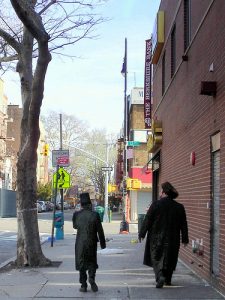It’s been years since I last thought about, let alone tasted, a charlotte russe, an exuberent concoction of sponge cake and whipped cream with a ruby cherry perched happily on top. A passing reference in the New York Times the other day brought the treat back into my sights.

As messy to eat as it was high in calories, a charlotte russe was housed in a paper container with a moveable lid at the bottom. It required a fair amount of coordination, perhaps even a keen sense of engineering, to be fully savored. While making your way downward, through the swirls of whipped cream, you’d also push the lid upwards, freeing the sponge cake in the process. Dessert in motion: what fun!
The only time I ever ate a charlotte russe was when my siblings and I visited my grandparents in their Brooklyn apartment on Sunday afternoons. At some point in the proceedings, probably when we became a little too rambunctious, we would be taken to the bakery around the corner and treated to a charlotte russe, whose consumption kept us temporarily busy and blessedly quiet.
A good eater, I loved polishing off an entire charlotte russe all by myself. I loved the pastry’s name even more. I knew enough to know that ‘charlotte russe’ was not an English phrase, but not enough to know whether it was Yiddish or French. No matter. Its foreign-ness beguiled me, hinting at the prospect of a big, big world outside the twin poles of my grandparents’ home and my own.
I’ve now come to understand that by the time I was enthusiastically gobbling down my charlotte russe, the treat was on its last legs, an “endangered series,” a victim of both high labor costs and a changing palate. I’ve also come to understand that it probably wasn’t much good, either.
All the same, I treasure those Sundays with a charlotte russe in hand and a smudge of whipped cream on my nose. An artful fusion of duty and pleasure, of memory and possibility, what better treat could there be?!


